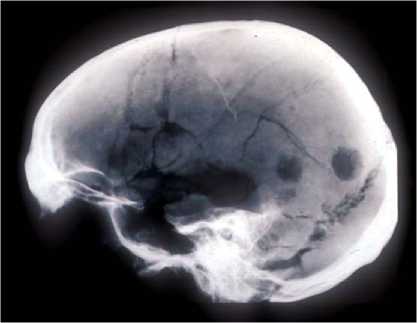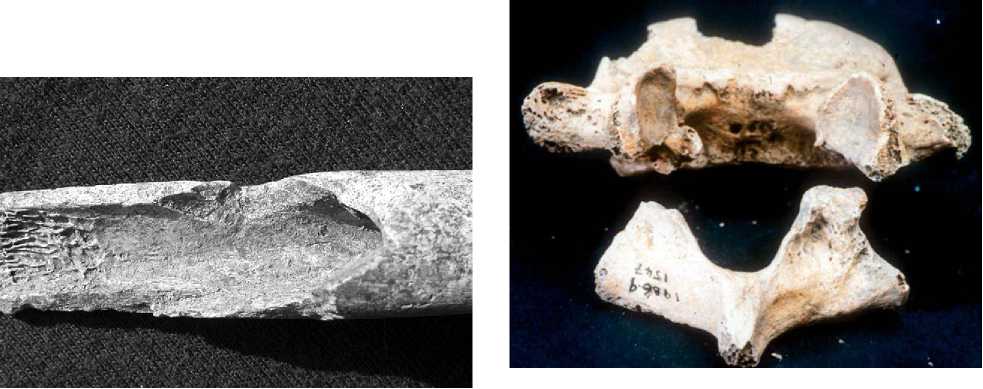The neoplastic diseases, tumor-forming conditions, carry the suffix ‘-oma’, meaning a swelling or tumor, which is accompanied by a prefix that indicates in what type of tissue or cell type the primary seat of the tumor originally developed. The benign forms are localized and usually not life threatening. The osteoma, a form of benign tumor, is the most frequently encountered form, often on the surface of the cranial vault, where they appear as hard bony swellings. Malignant neoplastic diseases (cancers) grow rapidly and spread from one tissue to another (i. e., they metastasize). TheY require enormous blood supplies in order to support their increased metabolic requirements. As a consequence, they are associated with rapidly expanding, bone-destroying lesions that elicit no bone-healing response. Neoplastic lesions, in most cases, are distinguished from other bone-destroying conditions by their lack of sclerosis (radiodensity) around their irregular lesion margins (Figure 21). The most common types of cancer are carcinomas that affect epithelial tissue (e. g., linings of organs) and sarcomas that occur in tissues originating in mesenchyme (e. g., connective tissues, including muscles and bone) with the former being more common than the latter. Carcinomas differ from sarcomas in that in the majority of cases, c. 80%, they metastasize from their primary location to others throughout the body via the circulatory or lymphatic systems.
Contrary to the grand majority of carcinomas, primary carcinoma of the prostate gland is among the

Figure 21 A radiograph showing the lack of sclerosis around perforating lesions of the cranial vault in neoplastic disease from Anglo-Saxon Eccles, Kent. Radiograph courtesy of Dr. Jo Buckberry from the collections of the Biological Anthropology Research Centre (BARC), University of Bradford.
Few neoplastic diseases that regularly produce bone formation. In prostatic carcinoma, lesions tend to be found in the pelvic area, but may also be found in bones throughout the body if they metastasize. Primary carcinomas of the lung and breast produce mixed lesions, both resorptive and depositional, often of the rib cage and then throughout the body after metastasis. Bone deposition also often occurs within medullary canals and is thus identified as radiodense (white) areas in radiographs. A major interest of researchers today is whether the prevalence of neoplastic disease is increasing and, if so, is this

Figure 24 Spondylolysis, a fracture of the neural arch of the fifth lumbar vertebra in a male buried in the lay cemetery of the Gilber-tine monastery of St. Andrew, Fishergate, York. Photograph of the author, courtesy of York Archaeological Trust.
Due to increased longevity, older individuals being more likely to develop neoplastic disease, or more predominant environmental carcinogens.




 World History
World History









